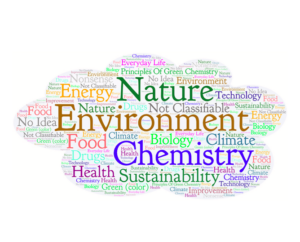CTI, Volume 4, Issue 2 (release August 1, 2022; https://www.degruyter.com/journal/key/cti/4/2/html)
This special issue of Chemistry Teacher International was a collaboration project between the Chemistry and the Environment Division, CHEMRAWN, the Committee on Chemistry and Industry, and the Committee on Chemistry Education.
The editors of Chemistry Teacher International are happy to announce the publication of a special issue on Green Chemistry and Sustainable Development.
Special thanks to guest editors Bipulbehari Saha, Francesca Kerton and Hemda Garelick for their work in bringing this issue together. And of course to the authors of the articles published in this special issue.
In many chemistry curricula Green Chemistry has become a feature. The curriculum in the Netherlands is an example (Apotheker, 2018). In introductory chemistry courses in higher education more and more attention is given to the principles of green chemistry (Hjeresen et al., 2000), as well as the ideas of sustainable development (UN Sustainable Development Goals, n.d.). This includes design principles like ‘cradle to cradle’, ‘cradle to grave’ as well as life cycle analysis (Braungart & McDonough, 2002).
Green chemistry for chemical synthesis addresses our future challenges in working with chemical processes and products by inventing novel reactions that can maximize the desired products, minimize by-products and eliminate the production of harmful substances in designing new synthetic schemes that can simplify the operations in chemical productions. The important inherent properties of molecules need to be considered from the earliest stage—the design stage—to address whether compounds and processes are depleting versus renewable, toxic versus benign, and persistent versus readily degradable. Sustainable economic growth requires safe, sustainable resources for industrial production (Li & Trost, 2008)
The number of concrete examples to illustrate these principles, that are used in education at this moment, is limited, even though there are many recent examples.
Within chemistry education it is important for students to understand the role chemistry plays in society. One of these roles is to apply chemical knowledge to design processes that implement the principles of Green Chemistry and help in Sustainable Development.
In order to demonstrate the role of chemistry more information for teachers is needed, so they can use this information and share this with their students.
In total nine articles will be published in this special issue. Most of the describing interesting experiments that can easily be used by teachers to introduce and illustrate the principles of green chemistry (Anastas & Eghbali, 2010). Some of the experiments were used and designed to be carried out at home. This was caused by the lockdowns occurring during the covid pandemia.
Introduction by Jan Apotheker, reproduced from CTI, vol. 4, no. 2, 2022, pp. 117-119. https://doi.org/10.1515/cti-2022-2001
 Featured img: ‘Word cloud representing the frequency of associations to the term Green Chemistry (N = 115 persons).’, reproduced from Lembens et al. (2022)
Featured img: ‘Word cloud representing the frequency of associations to the term Green Chemistry (N = 115 persons).’, reproduced from Lembens et al. (2022)

